CarEdge saved me over 4,500 dollars on a brand new Honda Pilot. I can't say thank you enough.
Price intelligence
Find a wide range of vehicle listings with market insights on new and used listings near you.


Help us personalize your CarEdge experience — it only takes a second.
Your answers help us personalize your CarEdge journey — we’ll follow up with tips and next steps that match your buying timeline.

Through the ups and downs of the auto market, one thing remains constant and crucial for car buyers to know: the best time to buy is the end of the year. As 2023’s year end car sales and special offers are just around the corner, patience will reward Ford buyers with huge discounts. Here’s a look at why Ford’s end-of-year sales are on track to be big, and which Ford models are set to receive the largest discounts.
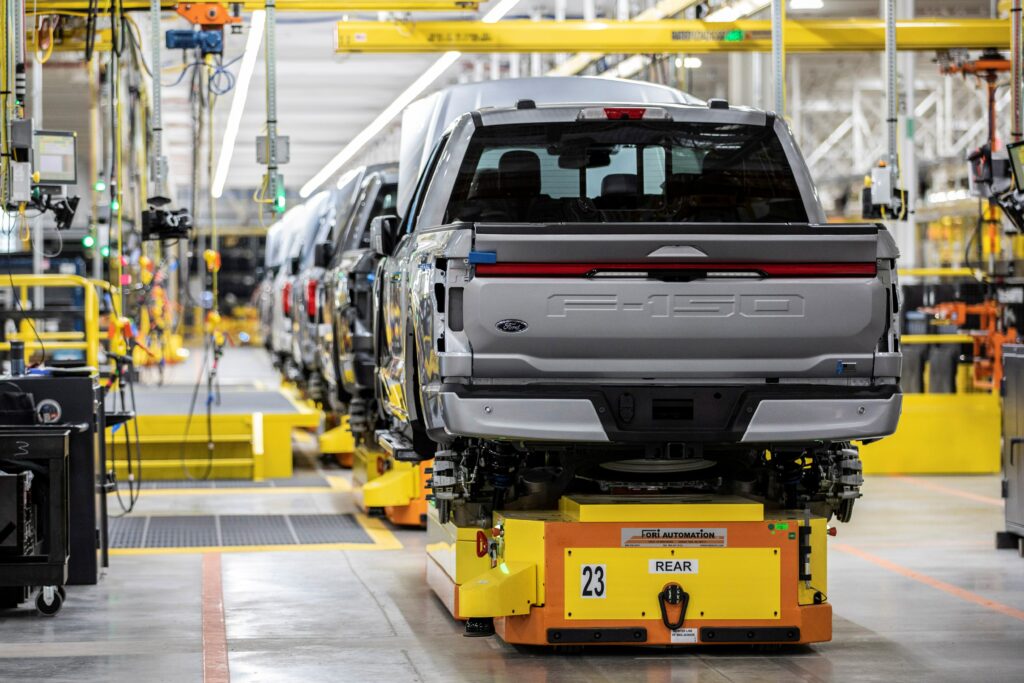
How could we possibly forecast massive Ford discounts a few months out? It’s as simple as this: Ford has too many new cars sitting on dealership lots, and it’s getting worse. Car dealers can’t let inventory sit for too long due to ‘floorplanning costs’. They finance the lot inventory they hold, and with high interest rates, they’ll eventually be losing money if they hold on to a vehicle for too long.
Ford’s inventory problem is growing worse. Auto industry measures inventory by ‘market day supply’. Market day supply (MDS) in the auto industry represents the number of days it would take to sell current vehicle inventory at the existing sales rate. Let’s take a look at the numbers:
July 4 – 86 days (313,689 cars)
August 15 – 96 days (318,339 cars)
September 29 – 112 days (373,059 cars)
Where is Ford inventory headed from here? The UAW strikes are the wild card, but other than that, there’s not much pointing towards quicker sales and a trend towards normal inventory without the introduction of big sales and special offers.
If you don’t think 112 days worth of unsold inventory is bad, here’s how Ford’s top competition stands today in terms of market day supply of new cars:
Honda – 35
Kia – 38
Toyota – 41
Chevrolet – 66
Hyundai – 68
Volkswagen – 81
Nissan – 84
Jeep – 176
Ram – 279
Yes, Jeep and Ram have far worse oversupply woes today, but that’s no excuse for Ford executives who will soon be deciding how far they’re willing to go with year-end sales in the months ahead.
Next, we’ll look at the five Ford models with the highest negotiability.
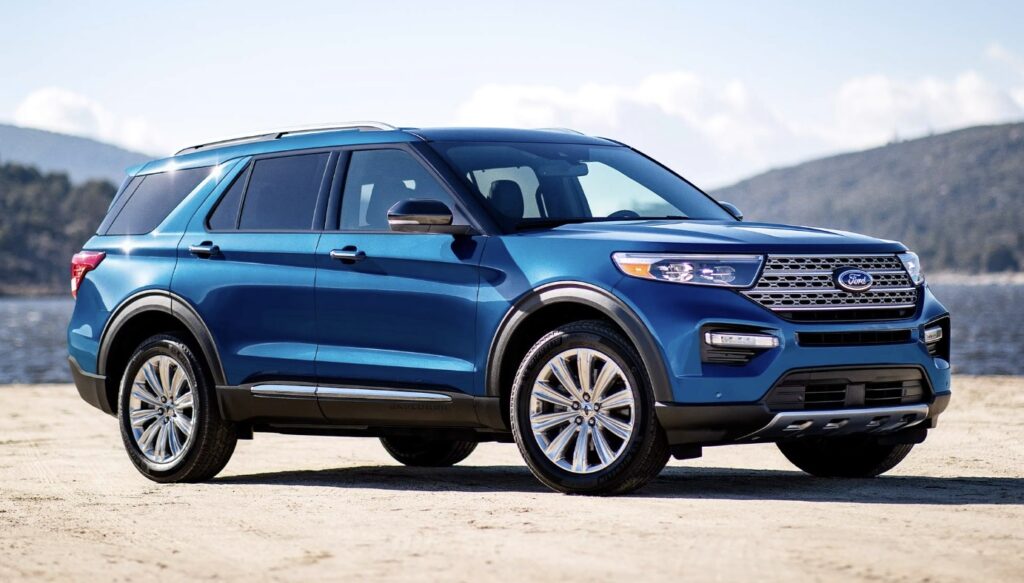
When you take a look at the Ford models with the highest inventory, some surprises may be in store:
F-150 Lightning – 256 days (7,749 for sale)
Mustang Mach-E – 191 days (23,256 for sale)
Explorer – 170 days (41,974 for sale)
Mustang – 150 days (11,291 for sale)
Edge – 149 days (27,245 for sale)
Market day supply of Ford’s top-selling model, the F-150, sits at 120 days with 101,256 for sale nationwide.
Conversely, the Maverick, Ranger, and Bronco all have current supplies below 60 days. These are the only Ford models that will be difficult to negotiate right now, but even with these, it’s not impossible (especially with the help of a Car Buying Coach).
These are the current deals for these models right now, and why for most of them, patience is key for a better deal.
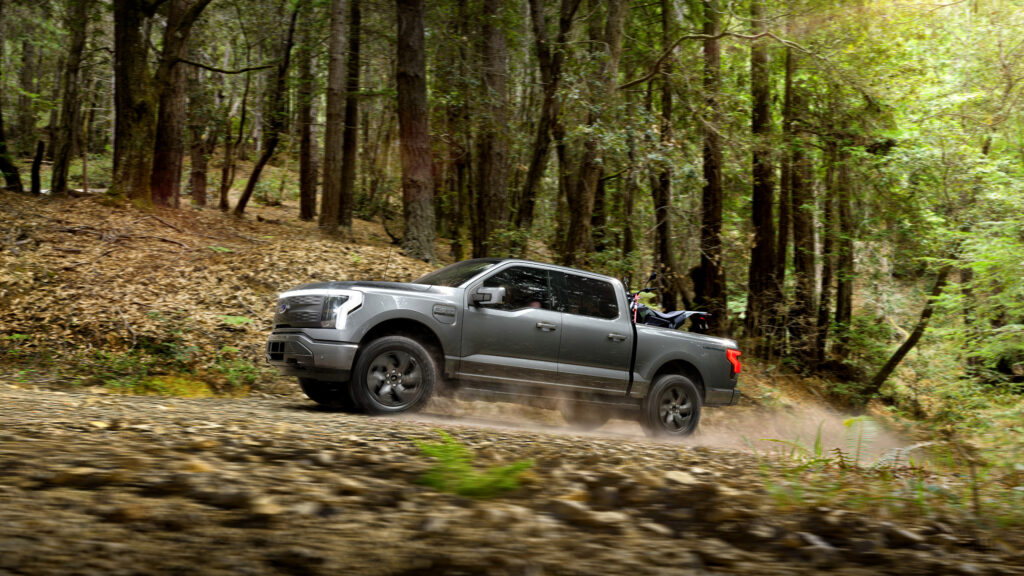
Financing: 2.9% APR for 48 months + $500 cash
3.9% APR for 60 months + $500 cash
1.9% APR for 36 months + $500 cash
Lease offers: Lease a F-150 Lightning XLT for $600/month with $6,251 due.
See Ford offers for your ZIP code.
Why you should wait: It’s worth repeating the wildest statistic in all of this Ford update. There’s a 256-day supply of F-150 Lightnings! It’s near the top of EV inventory among all OEMs, and you think this is as good as Ford incentives will get? Think again. As we approach the end of 2023, Ford is all but guaranteed to introduce greater cash incentives, and maybe even 0.0% or 0.9% APR for the Lightning. With a truck this expensive (the average selling price of the F-150 Lightning is $80,500), APR offers carry more weight.
Browse Ford F-150 Lightning listings with local market data.

Financing: 0% APR for 36-60 month loans; 1.9% APR for 72 months. This offer applies to all trim options.
Leasing: As low as $451/month for 36 months with $4,894 due.
See active Ford offers for your ZIP code.
0% financing is a great deal right now. The average new car APR is north of 7% right now, so anything under 3% is great. But zero percent? Even better. If you can secure this offer with NO dealer markups, we say go for it.
Year-end sales are likely to introduce bigger cash incentives with continued 0% APR financing, at least until Mustang Mach-E inventory drops below 100 days of supply. We’re not sure when that will happen, but one thing’s for sure: we’re a long way from it.
Browse Ford Mustang Mach-E listings with local market data.

Financing: 2.9% APR for 60 months + $1,000 cash offer. Those purchasing after the end of a Ford lease are eligible for $2,000 in additional ‘renewal cash’. Before 10/2/2023, an extra $1,000 in cash incentive is available, for a grand total of up to $4,000 off.
Leasing: As low as $439/month for 36 months with $4,969 due at signing.
See active Ford offers for your ZIP code.
Why you should wait: Ford seriously needs to sell some Explorers. With a 170-day supply and 2024 models arriving soon, even better incentives are just around the corner. Be on the lookout for 0% APR financing for a limited time, likely sometime later this fall.
Browse Ford Explorer listings with local market data.

Financing: Ford is not advertising any current APR offers for the Mustang. Contact your local dealer for more information.
Leasing: As low as $459/month for 36 months with $3,509 due
See active Ford offers for your ZIP code.
Why you should wait: There are no active Mustang finance offers as of late September, but that won’t be the case if Mustang inventory remains high come November and December. We recommend waiting until APR offers return to visit the dealership. Alternatively, you can always check your local credit union or community bank for competitive rates.
Browse Ford Mustang listings with local market data.

Finance offers: Ford is not advertising any current APR offers for the Edge. Contact your local dealer for more information.
Leasing: As low as $389/month for 36 months with $4,339 due at signing.
See active Ford offers for your ZIP code.
Just as with the Mustang, better special offers will be available as year-end sales approach. If you’re in the market for an Edge, it will likely be worth the wait if you can hold out until November or December.
Browse Ford Edge listings with local market data.
With the close of 2023 approaching, prospective Ford buyers have something to look forward to: significant year-end discounts on various models, making the wait worthwhile. Ford’s year-end sales are poised to offer considerable savings, a welcomed relief given the current state of the auto market. This anticipation is not unfounded as there is a growing inventory of new Ford vehicles piling up on dealership lots, signaling inevitable price cuts to clear the backlog.
High interest rates are compelling dealers to quickly turn over their financed inventory to avoid accruing floorplanning costs. As Ford’s market day supply (MDS) – the industry metric for gauging inventory – shows an upward trajectory from 86 days in July to a staggering 112 days in late September, it’s clear that dealerships will soon be compelled to offer enticing discounts.
When compared to the MDS of competitors, Ford’s situation becomes even more apparent. Big discounts are all but guaranteed in the months ahead.
Gone are the days of navigating car buying alone and unprepared. Our team at CarEdge has helped thousands of car buyers negotiate great deals, and we’re excited to help you buy a car that you’re proud of. Learn more about CarEdge Coach, Consults and DIY Data products that give you the knowledge and know-how to negotiate like a pro.
Knowledge is power, and with CarEdge’s insights, you’ll be equipped to seize the best deals as soon as they roll out.

Right now, there’s just a 38-day supply of new Kia vehicles in the U.S. What this means is, at the current sales pace, all 68,541 new Kia cars and SUVs would be sold in just over a month without new inventory. But how does this compare to other car brands? And more importantly, which Kia models give you the most room for negotiation, and which ones too hot to handle? Let’s dive into the details.

The average selling price of a new Kia car today is $33,340. This statistic is striking, especially as Kia introduces more models priced over $50,000 and discontinues its most affordable one. As of today, Kia’s brand remains synonymous with affordability, but that could be changing soon. Kia is up against stiff competition as buyers flock to the only remaining affordable cars on the market.
How does Kia compare to the competition? Let’s take a look at the latest new car inventory by brand:
| Make | Market Day Supply (October) | Change vs Last Month |
|---|---|---|
| Kia | 37 | +9 |
| Honda | 34 | +6 |
| Toyota | 40 | +10 |
| Hyundai | 68 | +18 |
| Chevrolet | 66 | +12 |
| Nissan | 83 | +12 |
| Volkswagen | 80 | +17 |
| Ford | 112 | +23 |
| Jeep | 176 | +30 |
Kia is near the bottom of the pack when it comes to new car inventory right now. Only Honda has fewer cars on the lot or in transit. This is similar to last month, despite all brands increasing their inventory as daily sales rates slow and new 2024 models arrive on lots.
The most surprising number here is Hyundai’s latest inventory. For the first time in many months, Hyundai has higher-than-average inventory. With 68 days of supply at current selling rates, Hyundai has almost double the inventory of its sibling Kia. Hyundai Motor Company owns half of Kia.
American automakers can’t seem to sell cars right now. Chevrolet is close to average with a 66-day supply, but Ford and Jeep are swamped with cars they can’t sell. Ford’s inventory woes could be related to the recent announcement that they’re pausing construction on their $3.5 billion EV factory.
From Ford to Chevrolet, Jeep to Ram, dealers are stubbornly keeping listing prices higher than one would expect considering the oversupply of new cars.
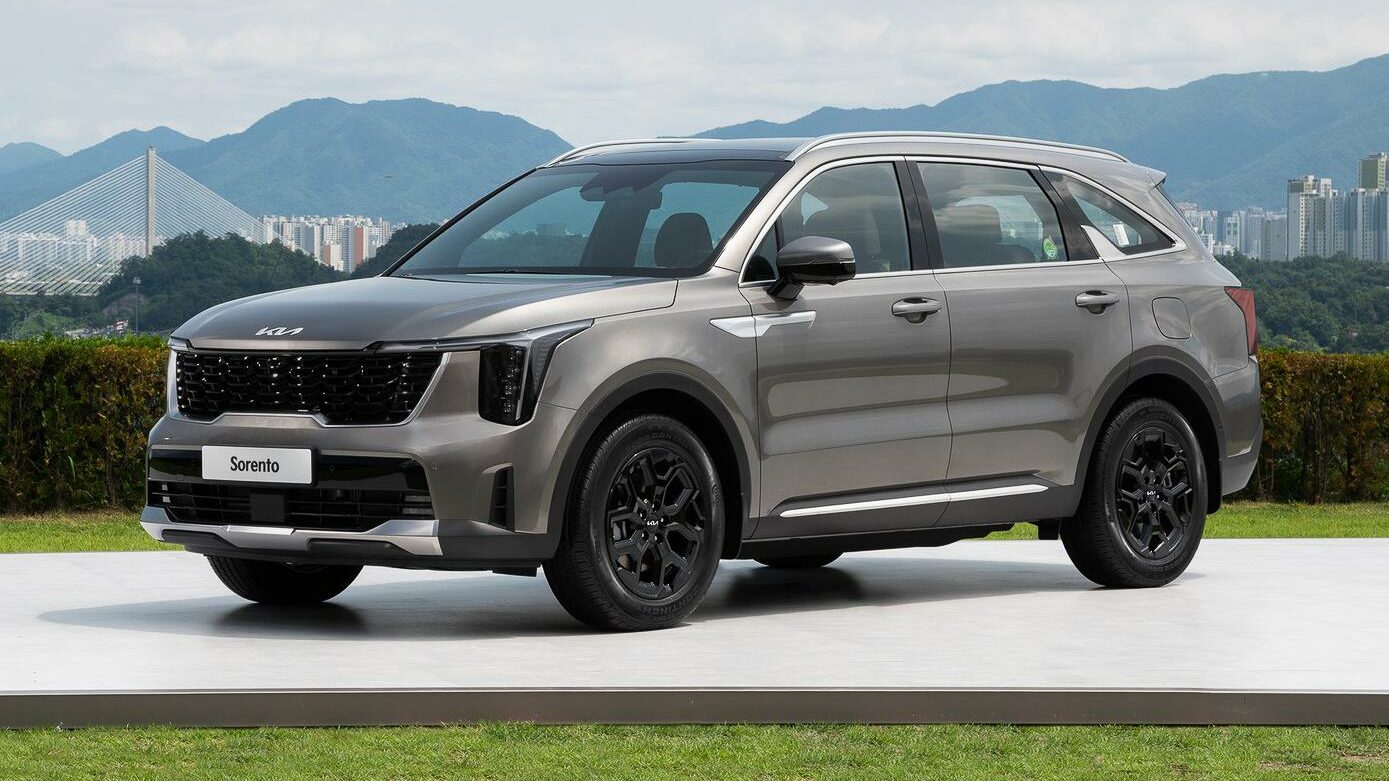
If your goal is to save thousands of dollars on your new Kia, it’s important to look a bit closer at the details. For that, we need to look at today’s inventory numbers across the Kia model lineup.
Using the tools available through CarEdge Data, we analyzed Kia inventory for every model on sale in America. These numbers reflect nationwide supply. You can check out local Kia inventory using CarEdge Data.
| Make | Model | Market Day Supply | Total For Sale | Average Transaction Price |
|---|---|---|---|---|
| Kia | Forte | 29 | 8,150 | $23,687 |
| Kia | Carnival | 30 | 4,024 | $42,620 |
| Kia | Rio | 31 | 1,879 | $19,433 |
| Kia | Telluride | 31 | 8,208 | $49,430 |
| Kia | Stinger | 33 | 188 | $47,998 |
| Kia | Soul | 34 | 3,941 | $23,869 |
| Kia | Sportage | 36 | 11,172 | $34,460 |
| Kia | Seltos | 40 | 5,067 | $27,953 |
| Kia | Sorento | 54 | 11,811 | $41,001 |
| Kia | Niro | 56 | 4,575 | $35,378 |
| Kia | EV6 | 83 | 4,104 | $53,668 |
| Kia | Brand Average | 37 | 68,141 | $33,430 |
The most negotiable Kia models are the ones with the highest market day supply right now. This month, the all-electric Kia EV6 tops the list by a long shot. There’s an 83-day supply of new EV6’s, and that’s actually an improvement from last month. In July, EV6 inventory peaked at a mind-boggling 146 days of supply, but has been drifting downward ever since.
The EV6 was a hot seller in 2022, but the model lost eligibility for the federal EV tax credit due to the Made-in-America requirement.
Other more negotiable Kia models are the Niro (56 days of supply), and the Sorento (54 days of supply). The Niro is simply a bit too compact for most of today’s SUV buyers, so that’s likely to blame for slower (but not terrible) sales.
When it comes to the Sorento, it is clear that it’s a slow seller for what most would argue is a justified reason. The Sorento has by far the worst reliability ratings of any new Kia model. The Sorento scored a 5 on Consumer Reports’ reliability ratings. Yes, that’s on a 100-point scale.
The good news is that every other Kia model they’ve tested scored MUCH better.
Here’s the complete breakdown of Kia’s most recent reliability scores by model.

In late 2023, the Kia Forte, Carnival, Rio, and Telluride are the least negotiable new Kia models. The Kia Rio’s presence among the least negotiable Kia’s is interesting to say the least. The Rio is getting discontinued in the United States after 2023. This is despite the Rio being a popular and very affordable compact car. The Rio is one of the last new cars with a base MSRP starting under $20,000.
Automakers are sticking to their very unfortunate and anti-consumer plan of getting rid of affordable base models. Through August, Kia has sold 19,100 Rio’s in America this year. The EV6 can’t beat that, and the Niro and Carnival are not too far ahead. Why, then, is Kia discontinuing the Rio? Simply put, Kia doesn’t make enough profit from each Rio they sell. Budget-conscious car buyers love the Rio, but that doesn’t seem to matter to the big OEMs who want to force every driver into a $40,000+ car.
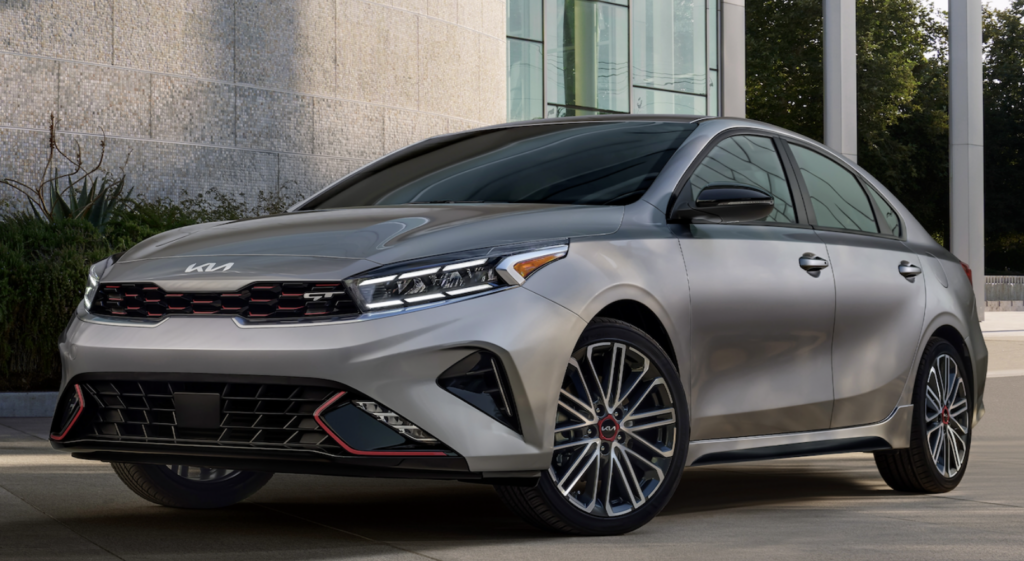
Soon, there will be even more demand for the Kia Forte, which is about to earn the title of ‘Most Affordable Kia Car’ with the passing of the Rio. The Forte is a hot seller, with just 29 days of supply. We expect the Forte’s market day supply to drop further as the last of the Rio’s are sold, forcing budget buyers to consider the slightly larger size and price tag of the Forte.
The Carnival and Telluride are in high demand right now, with about a one-month supply of each. These Kia’s aren’t cheap, and if it weren’t for the EV6 and upcoming EV6 electric SUVs, they would represent the top-of-the-line for the brand.
In order to successfully negotiate any of these models, be sure to work with a pro-consumer, honest Kia dealership. Browse local Kia listings with the power of market data with CarEdge.
Despite tight inventory, Kia is still advertising special offers this month. These are the best Kia deals worth your consideration in today’s market of high interest rates.
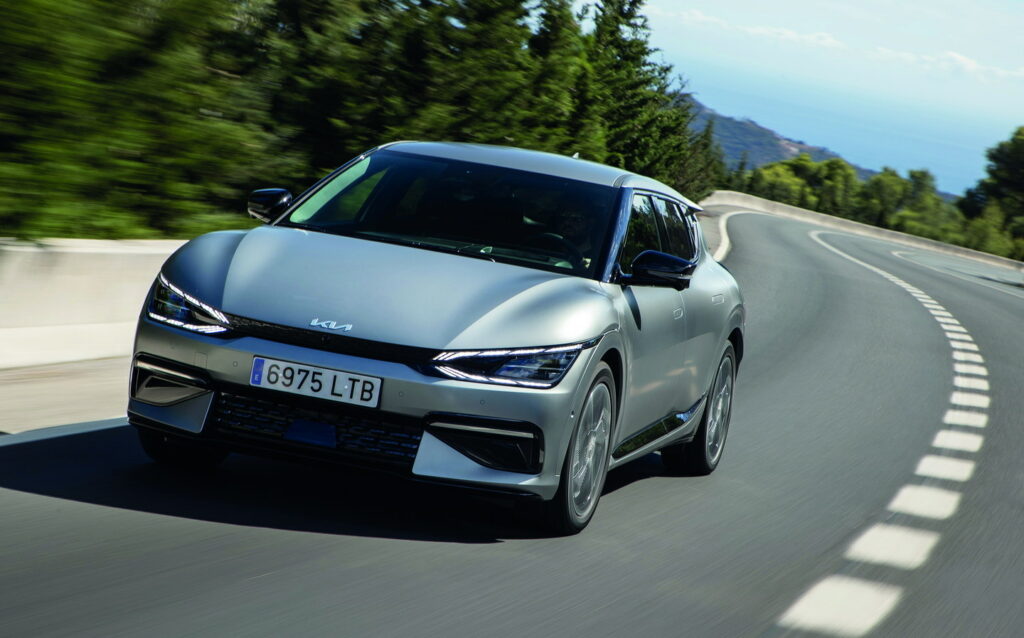
0.9% APR for 48 months
Up to $5,000 cash back
Note: The EV6 does not qualify for federal EV incentives, but may qualify for state and local incentives. The Niro EV charges painfully slow, and is not much cheaper, so we can only recommend the EV6.
See Kia EV6 listings with local market data.

2.9% APR for 48 months
See Soul, Forte and Stinger listings near you with local market data.
Kia also has a number of lease deals advertised. Check your local lease offers at Kia.com.
Despite the slim pickings with some Kia models, it’s still possible to negotiate a deal to be proud of. There’s no reason you should have to pay for dealer markups, forced add-ons, or overpriced warranties. If a dealer is attempting to force any of these B.S. charges and fees onto your deal, walk away, or work with a professional Car Buying Coach.
Ready to negotiate like a pro? Try CarEdge Coach and CarEdge Data today! With these tools at your disposal, you can take control of your car buying experience, understand market dynamics, strategize effectively, and secure the best deal possible. We’re simply here to help!
In the meantime, here are our reader favorites (100% FREE):

Once a brand synonymous with budget-friendly options, Kia has been striving to shed its old image and emerge as a reputable name in the automobile industry. But how do Kia’s latest cars and SUVs fare in terms of dependability? How reliable are Kia cars and SUVs today? If you’re thinking about purchasing a Kia, we’ve got data you’ll want to see.
Kia’s dedication to quality has not gone unnoticed. In 2024, Kia proudly stands within the top 10 of the most reliable car brands, as ranked by Consumer Reports. Let’s see how Kia’s reliability score measures up against its competitors:
Lexus – 79
Toyota – 72
MINI – 71
Acura – 70
Honda – 70
Subaru – 69
Mazda – 67
Porsche – 66
BMW – 64
Kia – 61 (Down one spot from the previous year, but with a higher score)
This list of the top 10 most reliable brands has gone through quite the shuffle in recent years. Brands like BMW and Kia have entered the top 10, while others like Lincoln and Audi were kicked off.
So, is Kia a reliable brand in 2024? Considering the latest rankings and reviews from Consumer Reports, the answer is a resounding yes.
How does Consumer Reports determine their reliability rankings? Here’s how they explain their methodology:
“Every year, CR asks its members about problems they’ve had with their vehicles in the previous 12 months. This year, we gathered data on over 300,000 vehicles, from the 2000 to 2024 model years (with a few early-introduced 2024model years), that address 17 trouble areas, including engine, transmission, in-car electronics, and more. We use that information to give reliability ratings for every major mainstream model.”
There you have it. This robust methodology is why consumers put so much trust in the Consumer Reports rankings and reviews. This makes it even more noteworthy that Kia has joined the top 10 most reliable car brands.
Next, we’ll take a look at the most reliable Kia models.
Consumer Reports tested nine Kia models, and there was a wide range of reliability scores among them. From the terribly rated Sorento to the superb Sportage and Carnival, it’s clear that Kia still has some work to do to bring the entire model lineup into the top rankings.
The most reliable Kia models include the Sportage, Carnival and Forte. The K5 and popular Telluride are not far behind.
Here’s how the nine Kia models CR tested were most recently rated:

The Sportage PHEV, Carnival and Forte may be the most reliable Kia models, but how do the top sellers fare? Here are the reliability rankings of the best-selling models. A few of the most reliable models are also the most popular!

Base Price: $26,290
Top Spec Price: $43,190
MPG: City 17 / Hwy 34 / Combined 25 miles per gallon
Consumer Reports Reliability Score: 60

You’ve probably noticed the redesigned Sportage’s spaceship-like front fascia over the past year. Most drivers would agree that it looks good, and is a pleasure to own. Consumer Reports says that The hybrid Sportage is the one to go for because it is “quicker, quieter, and gets 36 mpg overall.” Sounds like a winner for this price point.
When it comes to reliability, the Sportage ranks slightly above average for the brand with an overall score of 60.
Browse Kia Sportage listings with local market data.

Base Price: $19,690
Top Spec Price: $25,090
MPG: City 31 / Hwy 41 / Combined 35 miles per gallon
Consumer Reports Reliability Score: 44

In 2023, there are just a handful of new cars priced under $20,000. The Kia Forte still makes the list, just barely. This compact car has some redeeming features, such as impressive fuel economy. However, it has a stiff suspension that is noticeable on any road surface, and a loud cabin with lots of road noise. At this price, it’s still not bad for getting around town.
Browse Kia Forte listings with local market data.
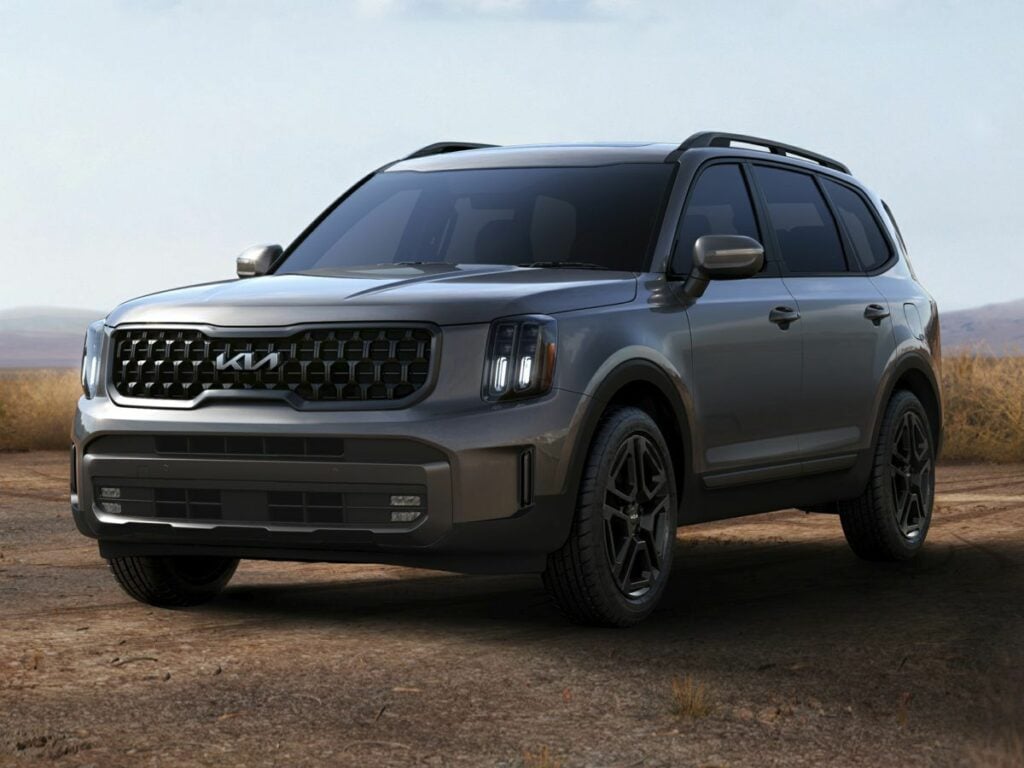
Base Price: $35,890
Top Spec Price: $52,985
MPG: City 14 / Hwy 30 / Combined 21 miles per gallon
Consumer Reports Reliability Score: 59

In just a few years, the Kia Telluride has gone from a market newcomer to one of the top selling SUVs out there. There’s no doubt about it: the Telluride offers amazing value for the price. With seating for up to 8 passengers and a well-equipped 291-hp, 3.8-liter V6 engine, there’s a lot to love. Regarding the Kia Telluride’s reliability, it scored just above average in Consumer Report’s testing and member surveys.
Browse Kia Telluride listings with local market data.
According to our CarEdge Maintenance Cost Rankings, Kia ranks #7 in the least expensive brands to maintain after 5 years. That’s in the top quarter of the 42 car brands sold in the U.S.
On average, the 5-year cost to maintain a Kia is $2,167. That’s $500 more than Toyota, about $100 more than Honda, and nearly $100 less than Kia’s sibling Hyundai.

KIA models average around $8,442 for maintenance and repair costs during their first 10 years of service. That’s because more frequent and costly maintenance is typically required between 5 and 10 years of operation. This is more than the industry average for popular brands by $1,628.
There is also a 19.92% chance that a KIA will require a major repair during that time. This is 0.58% better when compared to the other auto manufacturers in this segment that we have studied.
See the complete breakdown of Kia’s cost of ownership expenses and Kia maintenance costs.
Kia’s transformation from a budget-friendly brand to a name that resonates with reliability is commendable. With continual improvements and a keen eye on quality, Kia is steadily carving a niche for itself in the automobile industry. As you contemplate your next vehicle purchase, Kia certainly deserves consideration.

Nationwide, Toyota has 39 days of inventory. It’s true that Toyota models are some of the fastest selling cars on the market today, but this is actually an improvement. One month ago, Toyota was stuck with just a 30-day supply of new cars. More inventory means more negotiability, and Toyota has introduced some pretty tempting finance and lease deals. Let’s take a look at Toyota’s inventory this month, and the best Toyota special offers right now.
New inventory for 2023 and 2024 Toyota models is increasing after a rough summer for the much-loved automaker. The following Toyota models all have higher inventory levels today than they did one month ago:
Toyota’s rising inventory is good news for car buyers, but the brand continues to have a tighter inventory than most automakers in America. Here are the five OEMs with the lowest new car inventory today. Car market inventory is commonly measured with market day supply. Market Day Supply (MDS) represents the number of days it would take to sell the current inventory at the present sales rate, assuming no new inventory is added.
You guessed it! Toyota is on the list:
| Brand | Inventory Days Supply |
|---|---|
| Honda | 34 |
| Kia | 37 |
| Toyota | 39 |
| Lexus | 56 |
| Subaru | 63 |
| Market Average | 74 |
As we approach the end of the year, Toyota is clearly more eager to sell vehicles as 2024 model year vehicles arrive on dealer lots. Rising inventory only adds to the urgency for Toyota dealers.
Right now, Toyota is offering competitive APRs in this high-interest auto finance market. These are Toyota’s special offers this month.

3.99% APR for 48 months
Offer applies to all trims, but excludes Camry Hybrids. The Camry Hybrid offer is currently 4.99% APR for 48 months. See details and regional offers at Toyota.com.
Browse Camry listings with local market data.

3.99% APR for 48 months
Offer applies to all trims, but excludes RAV4 Hybrids. The RAV4 Hybrid offer is currently 4.99% APR for 48 months. There are no offers advertised for the RAV4 Prime. See details and regional offers at Toyota.com.
Browse RAV4 listings with local market data.
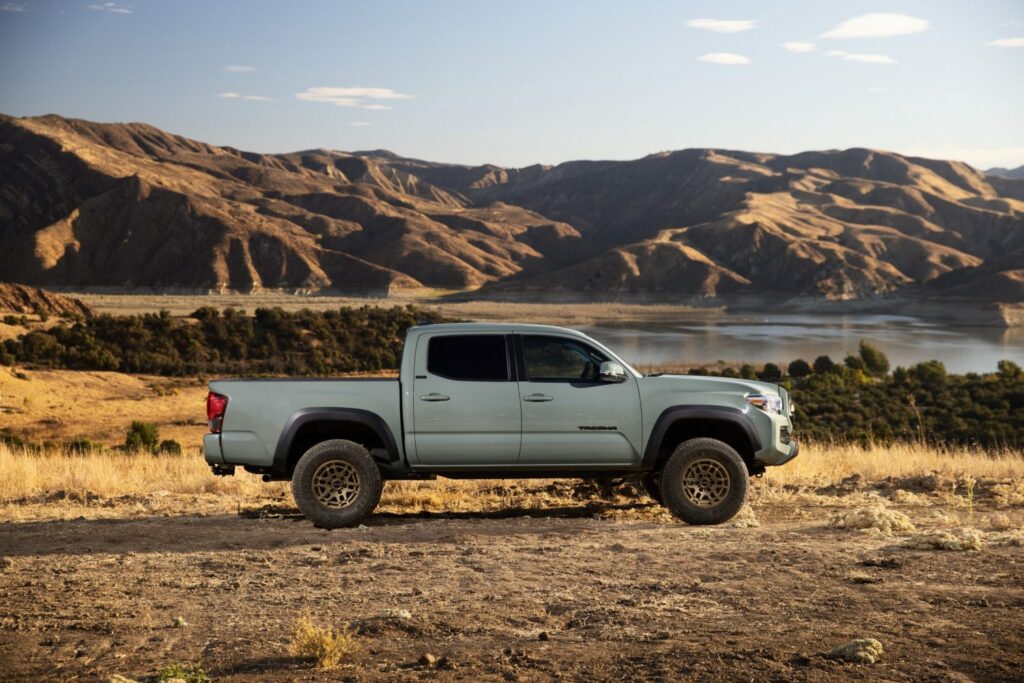
2.99% APR for 60 months
Offer applies only to 4×2 models, and applies to 13 trim options. Be sure to check the details at Toyota.com.
Browse Tacoma listings with local market data.

3.99% APR for 48 months
This offer applies to all trims, but excludes the Corolla Cross and hybrid models. See details at Toyota.com.
Browse Corolla listings with local market data.
Here’s the Toyota finance and lease offer for every new Toyota model today. We’ve also included the latest nationwide inventory numbers.
| Model | Days Supply (September) | Finance Offer | Lease Offer |
|---|---|---|---|
| 4Runner | 60 | No advertised offers | $615 for 36 months with $3,265 due |
| bZ4X | 99 | 1.99% APR for 48 months | No advertised offers |
| Camry | 43 | 3.99% APR for 48 months | $388 for 36 months with $3,028 due |
| Corolla | 21 | 3.99% APR for 48 months | $407 for 36 months with $407 due |
| Corolla Cross | 34 | No advertised offers | $369 for 36 months with $3,019 due |
| Corolla Hatchback | 50 | 3.99% APR for 48 months | No advertised offers |
| Crown | 76 | No advertised offers | $543 for 36 months with $4,053 due |
| GR Supra | 62 | No advertised offers | $803 for 36 months with $803 due |
| GR86 | 40 | No advertised offers | $418 for 36 months with $3,038 due |
| Grand Highlander | 26 | No advertised offers | $631 for 36 months with $3,281 due |
| Highlander | 44 | 3.49% APR for 60 months | No advertised offers |
| Prius | 25 | No advertised offers | $368 for 36 months with $3,038 due |
| RAV4 | 34 | 3.99% APR for 48 months | $413 for 36 months with $3,028 due |
| Sequoia | 33 | No advertised offers | $915 for 36 months with $915 due |
| Sienna | 28 | No advertised offers | No advertised offers |
| Tacoma | 44 | 2.99% APR for 60 months | $433 for 36 months with $3,083 due |
| Tundra | 51 | No advertised offers | $641 for 36 months with $641 due |
| Venza | 56 | No advertised offers | $455 for 36 months with $3,055 due |
| Brand Total | 39 |
For local Toyota inventory data and deals (new or used), learn more about CarEdge Data.
Our Car Coaches have successfully negotiated Toyota prices dozens of times in the past month. Here are a few examples of what’s possible with negotiation prowess.
The CarEdge Team is ready to help you negotiate a great deal on your next Toyota. Connect with a Coach today!

In recent years, automotive recalls have become almost commonplace. Yet, when an automotive giant like Ford faces not one, but two investigations by the National Highway Traffic Safety Administration (NHTSA) into the adequacy of their recall remedies, it warrants concern. Here’s the latest on Ford’s recall investigation, and how you can check if your car is impacted.

Back in October 2018, Ford issued a massive recall for over 1.2 million 2012-18 Ford Focus sedans. The prescribed solution was for dealers to reprogram the powertrain control module and, where necessary, replace the canister purge valve.
However, a second recall was initiated in July 2019. This covered approximately 57,000 2012-14 and 2017 Focus sedans, which, although included in the 2018 recall, did not get the intended powertrain control module update.
Now, the NHTSA is probing whether Ford’s recall solutions effectively addressed the underlying problem. Auto News reports that they’ve received 98 complaints from consumers regarding failure of the canister purge valve in the 2012-18 Focus models. Some of these vehicles had already undergone the recall remedy, whereas others had never been recalled but displayed the same defect. This has raised suspicions that Ford isn’t adequately addressing recalls. Whether this has been due to Ford’s internal policy or mere accident is up for debate.

A separate investigation is now looking into the 2018-21 Ford EcoSport vehicles. This came in the wake of 95 consumer complaints about engine failures due to a sudden loss of oil pressure. In a particularly concerning report, a vehicle owner stated the oil light came on even when the oil was full, leading to engine malfunction. This isn’t a cheap fix, either. The severity of the issue is such that it often requires a complete engine replacement.
In response to the unfolding events, Ford spokesperson Maria Buczkowski assured that Ford is actively cooperating with the NHTSA’s inquiries.
Recalls, although common, are usually decisive and efficient solutions to potential safety risks. What makes this situation exceptional is the frequency of Ford’s recalls. Not only has Ford topped the recall charts for the past three years, but 2023 alone has seen the company issue 44 recalls, affecting a staggering 4.6 million vehicles.
Is Ford’s recall a big deal? This is not the first, but the second time that Ford has faced an official NHTSA recall investigation this year. Automotive News reports that in August, the NHTSA announced that it was looking into Ford’s handling of a recall for 2022 Ford Mustang Mach-E electric SUVs. The 2022 recall was meant to address sudden power loss in 50,000 Mustang Mach E’s.
These five automakers have the most recalls in 2023:
According to new NHTSA stats, Ford issued 67 recalls in 2022. In 2022, Volkswagen had the second highest number of recalls, followed by Daimler Trucks North America and Chrysler.
With recalls being a pressing issue, one has to wonder about the root cause. Ford’s CEO, Jim Farley, has not shied away from acknowledging the elephant in the room. He’s openly admitted to quality control being a significant concern and has promised to prioritize fixing these issues. Farley has been quoted saying, “Fixing quality is my No. 1 priority,” but also cautioned that resolution will be a gradual process, spanning several years.
Perhaps having not one but two open NHTSA investigations will hasten the pace of Ford’s long-term solution for the quality control that plague the company.